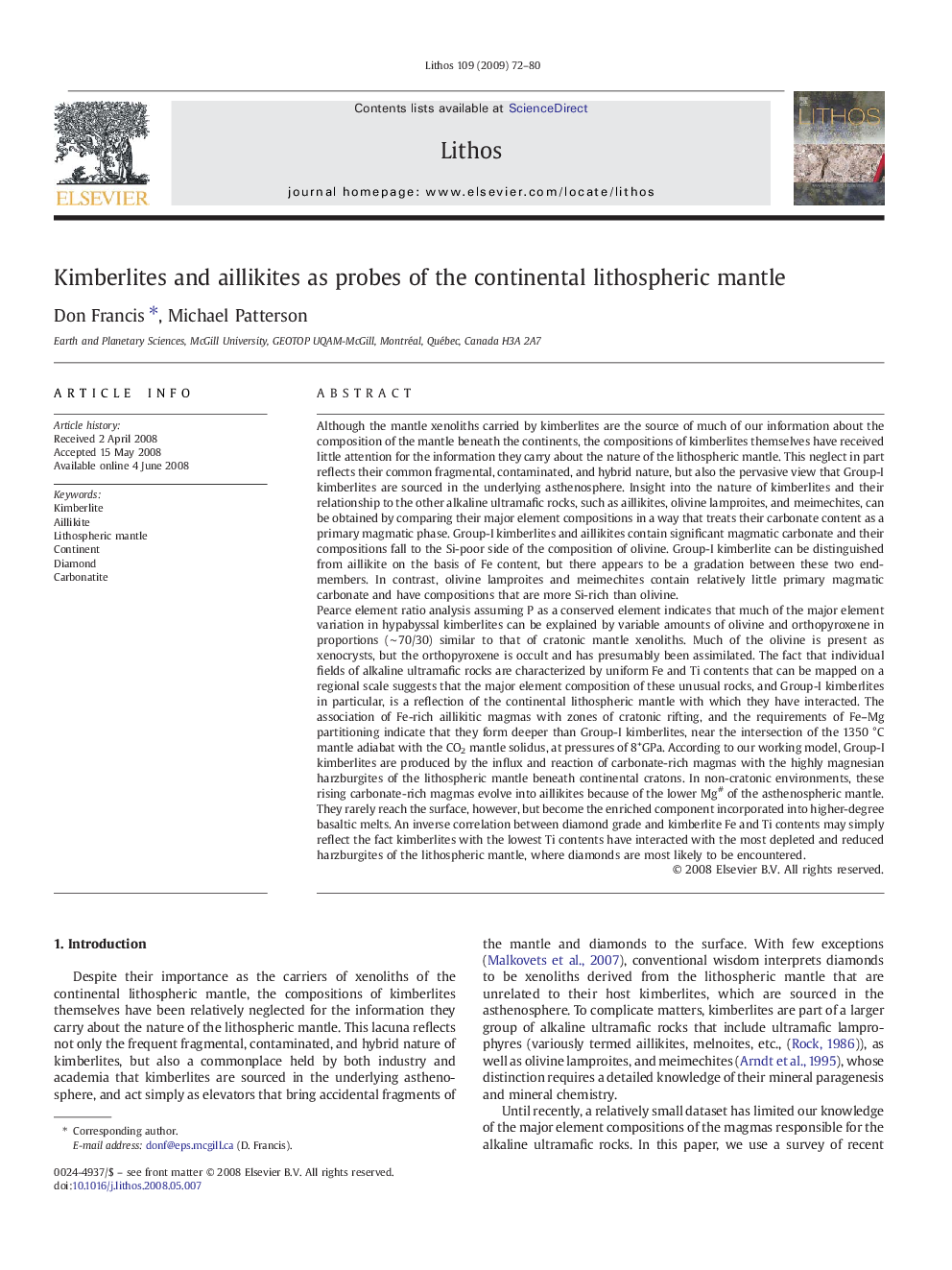| کد مقاله | کد نشریه | سال انتشار | مقاله انگلیسی | نسخه تمام متن |
|---|---|---|---|---|
| 4717446 | 1638746 | 2009 | 9 صفحه PDF | دانلود رایگان |

Although the mantle xenoliths carried by kimberlites are the source of much of our information about the composition of the mantle beneath the continents, the compositions of kimberlites themselves have received little attention for the information they carry about the nature of the lithospheric mantle. This neglect in part reflects their common fragmental, contaminated, and hybrid nature, but also the pervasive view that Group-I kimberlites are sourced in the underlying asthenosphere. Insight into the nature of kimberlites and their relationship to the other alkaline ultramafic rocks, such as aillikites, olivine lamproites, and meimechites, can be obtained by comparing their major element compositions in a way that treats their carbonate content as a primary magmatic phase. Group-I kimberlites and aillikites contain significant magmatic carbonate and their compositions fall to the Si-poor side of the composition of olivine. Group-I kimberlite can be distinguished from aillikite on the basis of Fe content, but there appears to be a gradation between these two end-members. In contrast, olivine lamproites and meimechites contain relatively little primary magmatic carbonate and have compositions that are more Si-rich than olivine.Pearce element ratio analysis assuming P as a conserved element indicates that much of the major element variation in hypabyssal kimberlites can be explained by variable amounts of olivine and orthopyroxene in proportions (∼ 70/30) similar to that of cratonic mantle xenoliths. Much of the olivine is present as xenocrysts, but the orthopyroxene is occult and has presumably been assimilated. The fact that individual fields of alkaline ultramafic rocks are characterized by uniform Fe and Ti contents that can be mapped on a regional scale suggests that the major element composition of these unusual rocks, and Group-I kimberlites in particular, is a reflection of the continental lithospheric mantle with which they have interacted. The association of Fe-rich aillikitic magmas with zones of cratonic rifting, and the requirements of Fe–Mg partitioning indicate that they form deeper than Group-I kimberlites, near the intersection of the 1350 °C mantle adiabat with the CO2 mantle solidus, at pressures of 8+GPa. According to our working model, Group-I kimberlites are produced by the influx and reaction of carbonate-rich magmas with the highly magnesian harzburgites of the lithospheric mantle beneath continental cratons. In non-cratonic environments, these rising carbonate-rich magmas evolve into aillikites because of the lower Mg# of the asthenospheric mantle. They rarely reach the surface, however, but become the enriched component incorporated into higher-degree basaltic melts. An inverse correlation between diamond grade and kimberlite Fe and Ti contents may simply reflect the fact kimberlites with the lowest Ti contents have interacted with the most depleted and reduced harzburgites of the lithospheric mantle, where diamonds are most likely to be encountered.
Journal: Lithos - Volume 109, Issues 1–2, April 2009, Pages 72–80